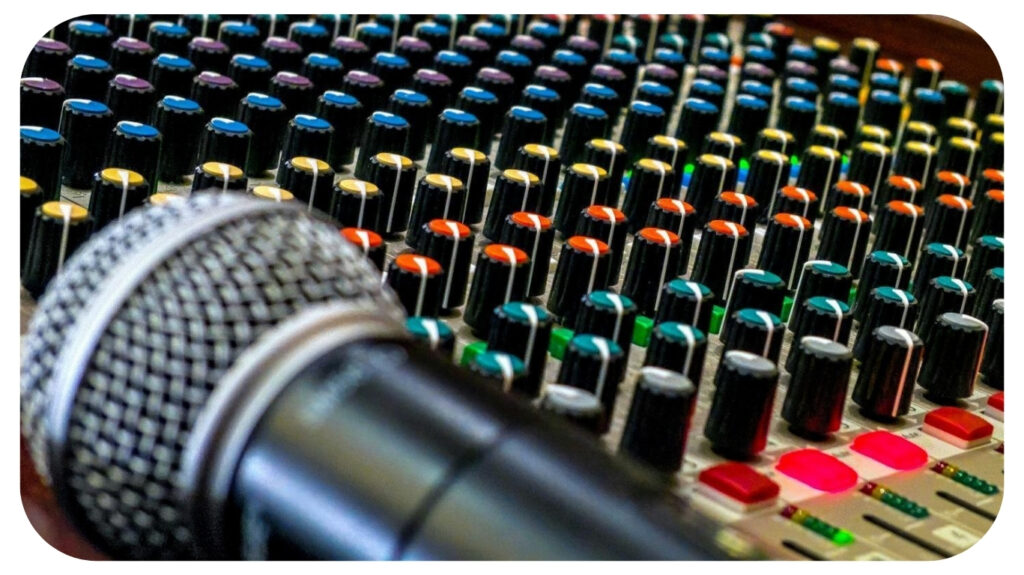The Importance of Audio Standards in the Film Industry: Insights from Marc Belluomini

Sound is one of the most powerful tools in filmmaking, shaping how audiences connect with a story. From dialogue to background scores, audio works alongside visuals to create an immersive experience. Without defined standards, the sound quality could vary, leading to inconsistencies that disrupt immersion.
Maintaining strict guidelines ensures that every aspect of a film’s audio, from clarity to volume levels, meets industry expectations and enhances storytelling. Seasoned boom operator Marc Belluomini has built a career in sound and shares his insights on audio standards in filmmaking.
The Role of Audio in Storytelling
Audio plays a vital role in storytelling, bringing depth to narratives and enhancing emotional connections. While visuals provide structure, sound adds meaning and texture. Without effective audio, even the most striking visuals can feel incomplete. Music, sound effects, and ambient noise work together to influence mood, reinforce themes, and guide emotional responses. A well-chosen soundtrack heightens tension, joy, or sorrow, making moments more powerful and memorable.
“Sound has a direct effect on emotions, often working subconsciously,” says Marc Belluomini. “A swelling score can make a triumphant scene more exhilarating, while subtle sound effects establish atmosphere and mood.”
Directors and sound designers carefully balance these elements to shape audience reactions. Music in minor keys evokes sadness, while upbeat rhythms inspire excitement. Sound effects serve as emotional cues, enhancing the narrative’s highs and lows. Without these elements, films lose their ability to engage on a deeper level.
Sound ensures clarity and immersion. Dialogue carries the narrative, and if it is muffled or poorly mixed, the audience risks losing crucial information. Sound engineers meticulously balance dialogue with background noise and music to maintain coherence.
Ambient sounds make settings feel authentic, adding depth to the film’s world. Effective sound mixing ensures seamless tonal shifts and pacing, keeping the audience engaged and focused on the unfolding story.
What Are Audio Standards in Film Production?
Audio is as important as visuals in film production, requiring strict standards to ensure consistency across different platforms and viewing environments. Technical benchmarks—such as decibel levels, frequency balance, and surround sound configurations—guarantee high-quality sound. These standards help filmmakers deliver a polished product that remains immersive across various playback systems, from theaters to streaming platforms.
Audio standards define key technical aspects to maintain sound quality. Decibel levels regulate intensity, preventing distortion or discomfort. Dialogue is typically mixed between -20 dB and -12 dB for clarity. Frequency balance ensures no single range overpowers the mix, allowing voices, music, and effects to blend seamlessly. Surround sound formats, like 5.1 and Dolby Atmos, create immersive soundscapes and require precise mixing to meet theater and streaming platform specifications. Adhering to these guidelines ensures films maintain audio consistency worldwide.
Post-production enforces audio standards through sound editing, mixing, and mastering. Engineers remove unwanted noise, balance elements, and refine audio to meet industry norms. Loudness meters measure overall levels, ensuring compliance with LUFS standards. Mastering focuses on dynamic range, balancing quiet and loud sections for a smooth listening experience.
“Quality control ensures final audio meets distribution requirements, preventing inconsistencies that could distract viewers,” notes Belluomini. “This process, when performed correctly, preserves the integrity of a film’s sound design, ensuring it translates effectively across different viewing formats.”
Challenges of Maintaining Audio Standards
Maintaining high-quality audio presents challenges, particularly in budgeting and technology. Limited resources often force filmmakers to make compromises, affecting sound quality. Post-production costs can be significant, and tight deadlines may limit the time available for meticulous audio refinement. Smaller productions may lack access to high-end equipment or experienced sound professionals, leading to subpar results.
Overcoming these obstacles requires careful planning, cost-effective solutions, and technological adaptation. Producing high-quality sound demands investment in personnel, equipment, and time. Smaller productions may struggle to afford experienced sound designers or state-of-the-art recording tools.
Limited budgets often lead to rushed post-production, where audio adjustments are insufficient. Even skilled professionals need adequate time to refine sound quality. Strategic planning, such as hiring freelancers or renting specialized equipment, can help mitigate these constraints.
However, compromises in audio production can still affect the final product’s impact. While advancements in technology have improved filmmaking, not all productions benefit from cutting-edge tools.
Outdated microphones, mixing consoles, or software can result in distorted recordings or unbalanced frequencies. Even modern tools require skilled operators to achieve professional results. Without trained sound engineers, audio issues may persist, creating problems in post-production.
Affordable digital tools now enable smaller teams to achieve higher standards. Software for noise reduction, equalization, and digital mastering enhances suboptimal recordings. Online training resources help filmmakers develop the necessary skills to manage advanced sound technology.
Collaborative platforms offer remote mixing and mastering, allowing independent filmmakers to access high-quality sound engineering. While these innovations help bridge gaps, maintaining industry standards still requires commitment and expertise.
The Importance of Audio Standards for Global Distribution
“Global distribution demands consistency in technical and creative elements, with audio playing a crucial role. Films must maintain high-quality sound regardless of platform or audience,” says Belluomini.
Unified standards ensure that sound enhances storytelling while meeting the requirements of different distribution channels and regional markets. Films are experienced on various platforms, each with different audio playback systems. Without consistent standards, discrepancies in volume, clarity, and balance can arise, diminishing the viewer’s experience.
Theatrical releases use sophisticated surround sound systems while streaming platforms require optimized audio mixes for smaller speakers. Industry guidelines ensure core elements, dialogue clarity, music balance, and sound effects, remain intact across all formats, preserving the film’s emotional and narrative impact.
Audio standards also support film localization for international audiences. Dubbing and subtitling must integrate seamlessly into the existing sound mix, maintaining natural synchronization and clarity. Dubbing requires precise mixing to match the original dialogue’s weight and tone, ensuring a cohesive experience.
Subtitled films must preserve ambient sounds and music, preventing interference with the film’s emotional delivery. Regional audio preferences—such as varying bass levels—are adjusted within industry frameworks to maintain consistency while respecting cultural differences.
By adhering to audio standards, filmmakers ensure their stories resonate globally without compromising quality. These guidelines enable accessibility, enhance engagement, and maintain artistic integrity across different languages and regions.
The future of film audio lies in the continuous evolution of sound technology and standardization. As streaming platforms expand and new audio formats emerge, maintaining high-quality sound across diverse playback environments will remain a priority. Innovations in AI-driven sound engineering and immersive audio experiences, such as spatial audio and virtual reality soundscapes, will push the boundaries of storytelling.
Accessibility improvements will play a critical role, ensuring that audiences with hearing impairments experience films without losing narrative depth. Industry professionals must adapt to emerging technologies while preserving the fundamental principles of sound clarity, balance, and emotional impact.
As filmmakers and engineers embrace these advancements, audio will continue to shape the cinematic experience, making storytelling more engaging, immersive, and inclusive for audiences worldwide.
Recommended For You
What’s The Importance of Internet Networks – Now & Tomorrow?
Most Inside
Most Inside offers high-quality recommendations and valuable updates to enhance all aspects of your life, providing premium guidance and enriching experiences.




